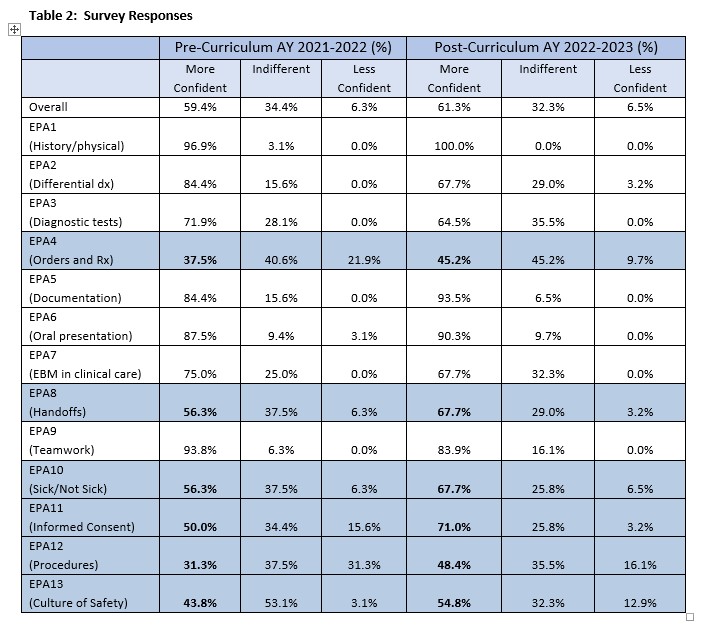Medical Education
Session: Medical Education 4
395 - Integration of the Core Entrustable Professional Activities into Advanced Clinical Education for the Pediatric-Differentiated Senior Medical Student
Saturday, May 4, 2024
3:30 PM - 6:00 PM ET
Poster Number: 395
Publication Number: 395.1430
Publication Number: 395.1430
- MC
Maribeth Chitkara, MD (she/her/hers)
Professor of Pediatrics
http://www.stonybrookchildrens.org
Stony Brook, New York, United States
Presenting Author(s)
Background: In 2014, AAMC published 13 core entrustable professional activities (EPAs) to align development of trainees through the undergraduate (UME) to graduate medical education (GME) transition. Consideration of EPAs in medical education allows for an understanding of mastery of abilities across individual competency domains. Educators in UME strive to teach and assess EPAs in their advanced clinical coursework for senior students.
Objective: 1. Develop and pilot an EPA-focused curriculum that can be embedded in advanced UME clinical courses.
2. Evaluate the effectiveness of the curriculum in regard to residency preparedness and confidence with core EPAs.
Design/Methods: Senior medical students at participating institutions were surveyed regarding overall level of comfort with 13 EPAs using a 16-item Likert-scale survey with two open-ended questions. Students from 2 separate cohorts were surveyed prior to graduation at the end of the 2021-22AY (pre-) and 2022-23AY (post-). Student responses were grouped into three categories: less confident (1-3 ratings), indifferent (4-5 ratings), and more/very confident (6-8 ratings).
Results: Based on results from the 2019 needs assessment, EPAs 4, 8, 10, 11, 12, and 13 were identified for a workshop series. COMSEP members from 12 institutions created content and workshops were delivered at 10 institutions during the spring of 2023 (Table 1).
59% (19/32) of students surveyed at the end of 2021-22AY (pre-) indicated that they felt very confident about entering residency. Overall level of confidence was strongly, positively correlated with EPAs 2, 3, 6, 7, 8, and 9. More than 20% did not feel confident with EPAs 4 and 12. Results of the second cohort (2023 AY, post-) demonstrated a similar percentage (61%, 19/31) felt confident about starting residency; however, strong, positive correlations was seen with EPAs 4,5, and 13 compared to pre-curricular survey results. Each of the EPAs targeted in the curriculum demonstrated trends towards improved confidence (Table 2).
All survey participants were required to take either one or two sub-internships at their institution. Repetition and hands-on practice were experiences stated as helpful in building their level of confidence with EPAs.
Conclusion(s): We sought to identify specific EPAs students felt least comfortable with upon beginning residency and design educational sessions to address them. Targeted workshops to those EPAS showed improvement in confidence levels. Course directors should focus curricular development efforts on strengthening hands-on experiences for these EPAs within advanced clinical courses.
.jpg)

